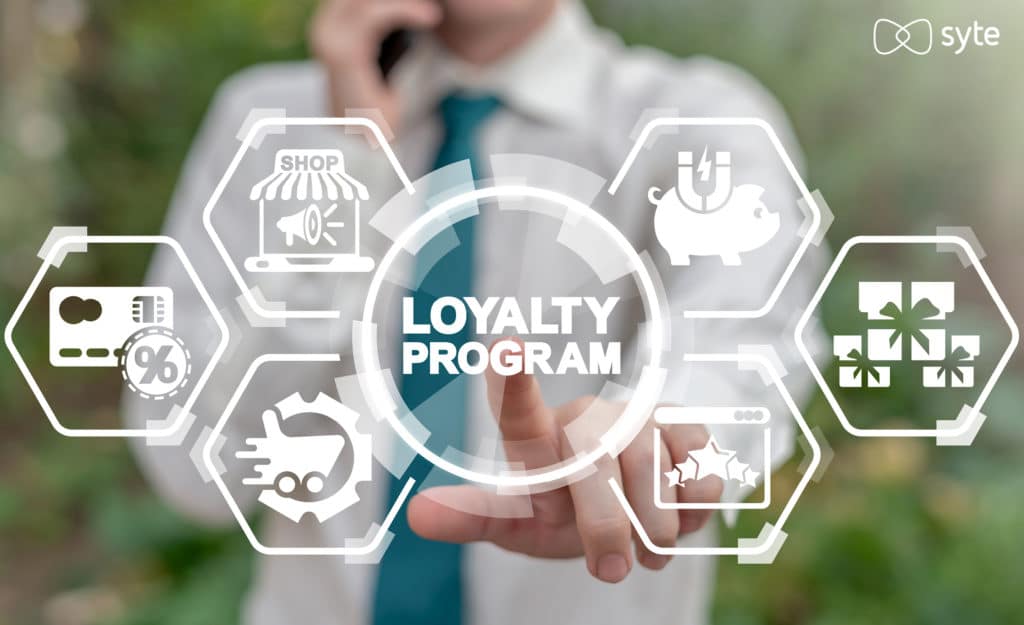We recently sat down with Becki Francis, Associate Director of Retail Strategy at Movable Ink, an intelligent content provider focused on improving and accelerating marketing performance for retailers. Becki is a subject matter expert on email marketing trends and the retail vertical, working closely with clients to devise strategies which directly map to their performance goals.
We spoke about the changing trends in customer loyalty in the new era of eCommerce, how to convert holiday shoppers into long-term relationships, as well as specific steps retailers can take to build brand loyalty and improve their online customer experience in 2022 and beyond.
Watch the video for the full conversation or check out some of the highlights below (edited for clarity).
Loyalty in the New Era of eCommerce
Syte: What’s different about loyalty and customer relationships in the new era of eCommerce?
Becki: Loyalty has always been really important to retailers, especially because it’s more cost-effective to retain existing customers than it is to acquire lots of new customers. But it’s really come to the forefront since the onset of the pandemic. We saw a huge acceleration of digital growth in eCommerce as a result of that.
In the online forum, it’s so easy to find similar products, to compare prices, to compare promotions, shipping timeframes, etc. That’s all meant that loyalty has become much more elusive — retailers are having to work a lot harder to get customers engaging regularly with their brands.
The holiday season, in particular, is always a time when customer fluidity is really heightened — when retailers acquire a lot of new gift-givers and Black Friday promotion-seekers.
Converting Holiday Shoppers Into Long-Term Relationships
Syte: With all of these new customers coming onto websites now, at the end of the year, how can retailers really grow those relationships into the New Year and throughout 2022?
Becki: People have come to expect really great digital experiences, and that translates into retail as well. When consumers have a really good experience on one platform, they’re not thinking of different verticals in different buckets. They’re thinking, okay, I had a great experience here and I want to be able to replicate that convenience and seamlessness in the next experience as well.
So to convert one-time shoppers into return customers, we’re really going to have to think about loyalty in a different way than we have before. We’ve got to prioritize that customer relationship, that customer convenience, and bring customer-centricity to the forefront of those relationships.

The Difference Between Loyalty and Repeat Purchases
Syte: There is a difference between repeat purchases and actual, true loyalty of a customer to a brand. So, what’s at the foundation of brand love and brand loyalty?
Becki: I think that we tend to conflate loyalty with repeat purchasing sometimes. For example, if we can get someone to buy again and come back to our website, maybe they’re loyal — even if we have to be in this constant cycle of promotions to get them to come back and keep buying.
But we are seeing a really significant shift in that approach across the sector. I liked the word you used earlier about customer relationships because that’s, at its core, what it is, right? It’s reciprocal benefits, it’s transparency, it’s value, and those things aren’t always rooted in just driving the next sale from that consumer.
How to Create Brand Loyalty
Syte: So, what will actually create that customer stickiness for brand loyalty?
Becki: Well, in my opinion, personalization is really at the heart of this. We recently conducted a survey at Movable Ink, and we found that 68% of consumers say they’re likely to be a loyal eCommerce customer if a brand puts in the effort to build a personal relationship with them.
The danger is that personalization is such a buzzword. It’s thrown around so much, it’s become quite ambiguous and difficult to pin down. I think there are two parts to personalization. The first part is really getting an understanding of what that individual customer wants and needs from your brand. So not at a segment level, ideally, but at a one-to-one customer, individual level — know what they want, understand their needs and intent. Customers need to feel heard and feel like your brand understands them.
Then, the second part of that, crucially, is acting on it. So if a customer has entrusted you with their information, use it to deliver value. That could be offering rewards or product recommendations, or tailoring your loyalty points program to make sure that you’re giving them exactly what they need with the data that they provide.

Key Strategies to Improve Your Customer Experience
Syte: Can you share specific stickiness factors that retailers can try to create for their customers?
Becki: The first thing I’ll say on that point is that there needs to be cross-channel consistency. Make sure that whatever experience you’re delivering on-site, you can replicate on email and mobile, and vice versa. For example, anything you’re personalizing outside of the website — like product recommendations or personalized promotions — should carry through online as well.
And this year, the holiday season is compounded by supply chain issues, meaning that customers are needing to shop around more to make sure they’re getting their gifts and getting them on time. So, we’re going to have to work harder than ever to make sure that we’re pulling those customers back in in the new year. Start thinking about that now. Start optimizing your welcome program. Start optimizing your post-purchase experience, and, crucially, optimizing the on-site experience as well. Make sure that everything is intuitive, convenient, personalized, and as seamless as possible for that consumer when they land on your website.